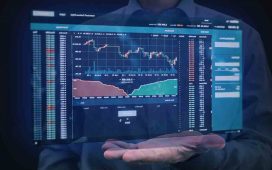Exchange Traded Funds (ETFs) are a popular and cost-effective way to gain exposure to different markets due to their low expense ratios, tax efficiency, liquidity and diversification benefits. They have become increasingly popular in the UK as more investors look for ways to access global markets from the comfort of their homes. However, experienced traders need advanced strategies to maximise returns and minimise risks when trading ETFs in the UK. This article discusses advanced strategies experienced traders can use when trading ETFs in the UK.
Leverage
Leverage is a crucial tool for ETF traders in the UK, as it allows them to amplify their returns by borrowing money from their broker. By doing this, traders can access more capital without increasing their ETF investment. However, the ETFs must have enough liquidity and volatility to suit such trading strategies. Leveraged ETFs are also available, offering higher leverage terms than traditional ETFs, but these come with an increased level of risk due to the high leverage levels. Traders should use caution when employing leveraged ETFs as they can cause significant losses if not managed correctly.
Algorithmic trading
Algorithmic trading is another advanced ETF trading strategy that experienced traders can use. It involves using computer algorithms to place ETF trades, which helps to reduce the time taken to make a trade and can often result in more profitable ETF investments. Algorithmic trading also allows UK ETF traders to take advantage of price discrepancies across markets and arbitrage opportunities if they arise. However, algorithmic trading requires much knowledge and understanding of how the markets work, so it is not recommended for novice traders.
Hedging
Hedging is another popular ETF trading strategy experienced traders use in the UK. It involves taking out positions in different ETFs with opposing returns, allowing traders to limit their losses if one ETF performs poorly. UK ETF traders can also use derivatives to hedge their ETF positions, such as futures and options contracts. Hedging ETFs is an excellent way to reduce risk in volatile markets, but it requires careful consideration of the ETFs involved and how they may move concerning each other. Additionally, hedging ETFs can be expensive, so ETF traders should carefully weigh the costs and benefits before entering into any hedging strategies.
Short selling
Short selling is an advanced trading strategy that experienced ETF traders can employ when trading ETFs in the UK. It involves taking a short position on an ETF by borrowing funds from a broker and selling it on the open market to buy back at a lower price later. It allows traders to profit from falling prices and access more capital than they would otherwise have. However, short-selling ETFs can be risky as ETF prices may rise unexpectedly and cause traders to incur a loss on their ETF positions. Moreover, ETFs with low liquidity can be difficult to sell short.
Arbitrage
Arbitrage is another advanced ETF trading strategy experienced UK traders employ. It involves taking advantage of price discrepancies between different markets and buying an ETF at a lower price in one market, then selling it for a higher price elsewhere. It requires traders to understand how markets move and react to news events. The use of arbitrage can help ETF traders increase their returns, but it also carries a high level of risk due to the need to take significant positions quickly to profit from the price discrepancies.
ETF options
ETF options are a sophisticated ETF trading strategy experienced ETF traders can use. Options contracts allow UK ETF traders to purchase the right, but not the obligation, to buy or sell an ETF at a specified price and time in the future. It gives ETF traders access to more significant positions than they would otherwise have without increasing their investment capital. It also allows them to hedge their ETF positions against falling markets by purchasing put options contracts. However, ETF options come with increased levels of risk due to the leverage involved and require a great deal of knowledge about market movements and pricing behaviour.







